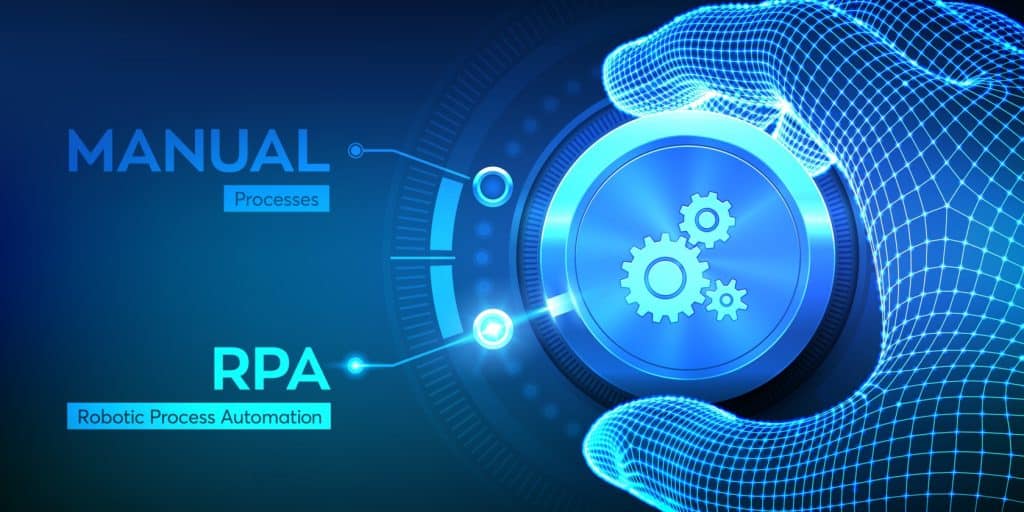
Organizations have been running on benefits and profits, for the most part, are the function of the expenses. After industrialization, the expenses were diminished by making effective processes to run things easily over an anticipated timeline. This was all acceptable till the time computers came and along came the internet connectivity.
The processes moved from humble registers to computers and when the computers work turned out to be exorbitant in a specific market, some of the processes moved to the low-cost centers. This for keeping up the expense to produce more profits. The business process automation(BPA) has been doing likewise. It is tied in with finding the efficiencies in the business cycles to chop down superfluous steps and make them less exorbitant.
Robotic Process Automation (RPA) assists with automating dull and rule-based manual processes. It empowers to automate errands, as a large scale would in an excel workbook, scaling the effort across work areas, enterprise servers, browsers, websites, cloud, and so forth. However, RPA is without decision-making ability.
Artificial Intelligence (AI) and its intrinsic disciplines, including Machine Learning (ML), Natural Language Processing (NLP), and so forth, help to acquire the learning and decision-making abilities in an RPA task. Basically, RPA is for doing. Artificial intelligence is for contemplating ‘what should be done’. Artificial intelligence makes RPA intelligent. Together, these advances offer ascent to Cognitive Automation, which automates many use cases, which were just inconceivable before.
The most recent transformation was the point when the virtualized platforms permitted the expansion and expulsion of assets required for processes dependent on the workloads. This permitted the organizations to investigate opportunities to characterize their processes based on automated rules. This was the development of Robotic process automation.
RPA goes above and beyond making the monotonous process automated so human intercession is lost. A straightforward application for this could be rule-based reactions you need to accommodate certain work processes. When you code in the Rules once they don’t need any kind of intervention and the RPA deals with everything. Organizations have profited by executing RPA based solutions and processes to reduce expenses multiple times. This is where bots began taking over communication as one of the first use cases.
APIs are the most ideal approach to communicate with the applications, at whatever point they give APIs. Initially, an API ensures an upward compatibility when an application is updated, which facilitates bot’s maintenance and improves their unwavering quality in the long-term. Remember that normal RPA bots connect with five-eight distinct applications. Second, it has a lower response time and better performance. In addition to the fact that it saves assets from your IT foundation, it additionally lets your bots accomplish more work in a similar time frame.
Intelligent Automation (IA) is a blend of Robotic Process Automation (RPA) and artificial intelligence (AI) technologies which together encourage rapid end-to-end business process automation and accelerate the adoption of digital transformation.
To broaden the skylines of business process automation by a significant degree, Intelligent Automation joins the task execution of RPA with the ML and analysis capabilities of automatic process discovery and process analytics as well as cognitive technologies, like computer vision, Natural Language Processing, and fuzzy logic.
Intelligent Automation traverses the whole automation journey—discovery, automation, optimization—automating any front- or back-office business process, and orchestrating work across combined human-bot teams.
Where an RPA empowered task needs human intercession at explicit stages, for example, to handle an invoice (an attended bot), AI capacity acquires cognitive resources to encourage seamless automation. Artificial intelligence perceives the invoice, recognizes the merchant, partners it with the purchase order, and triggers the Accounts Payable workflow for making the payment.
It may very well be even empowered to ingest paper-based documents utilizing Optical Character Recognition (OCR) and fuzzy logic. An enterprise-grade RPA with cognitive
resources not just offers a steady performance if there is an increasing workload, but also offers high scalability. It performs straightforward, medium, and highly complicated processes without any difficulty.
The current revolution is Industry 4.0 which will change the dynamic indeed. The RPA process actually needs to be prepared before they can apply the principles accurately for the given use case. The AI, ML, and cognitive computing give the capability of self-learning to these frameworks and make the learning a hands-on task, fundamentally the same as the human method of learning. This difference in process automation is being promoted as Intelligent robotic process automation (iRPA) and it is here to stay.
iRPA can not just make bots more intelligent with each interaction they have, however, can likewise be prepared to look out for new areas where they could begin helping. So suppose you make a bot for customer support and over the period of time the bot can begin giving choices of features required in your products and services based on the feedback received in the interactions or give you insights about if a product might be fruitful similar product launches in the past.
Share This Article
Do the sharing thingy